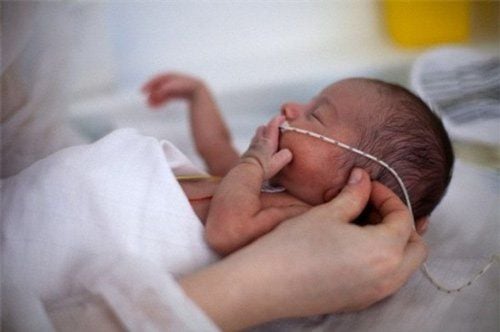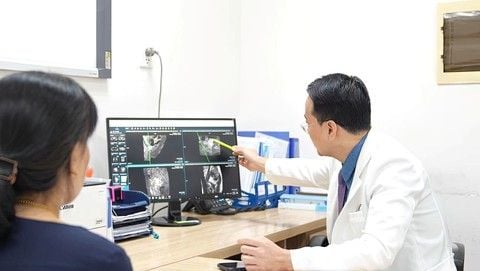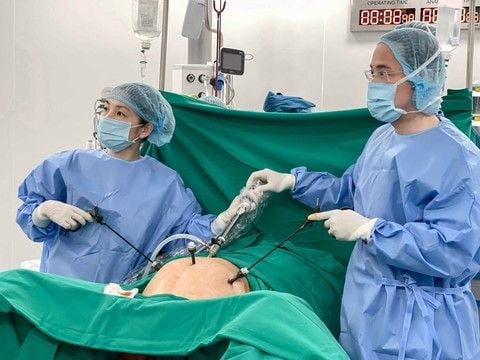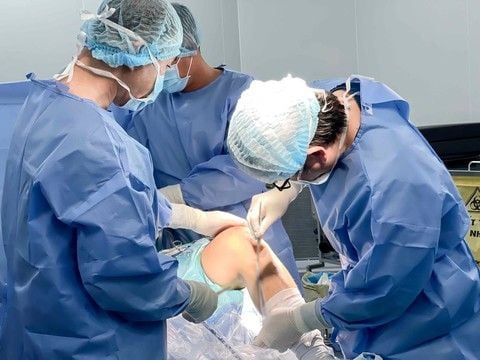The article was professionally consulted by MD. Specialist first degree Dang Thi Ngoc Chuong - Department of Pediatrics - Neonatology, Vinmec Central Park International General Hospital.
Protruding navel in newborns, also known as umbilical hernia, is an abnormal bulge caused by part of the abdominal mucosa, intestines or fluid coming out, passing through the abdominal wall muscles and protruding through the newborn's navel. Umbilical hernia is quite common and low birth weight and premature babies are more susceptible to umbilical hernia.
1. Causes of umbilical hernia
During pregnancy, the umbilical cord passes through a small hole in the fetus's abdominal muscles and this hole will close immediately after birth. In cases where the abdominal muscles do not completely fuse together to close the navel, the newborn's navel is open, and an umbilical hernia will occur at birth or later in life.
Parents can rest assured that doctors or midwives cutting or clamping the umbilical cord when the baby is born does not affect or cause umbilical hernia.
2. Symptoms of umbilical hernia
Parents can see the hernia most clearly when the baby cries, coughs or is straining to go to the toilet. Because these actions increase pressure in the abdomen, the hernia is pushed through the navel. The hernia may shrink or disappear when the child is relaxed or sleeping. Usually, the child does not feel uncomfortable because the hernia is painless.
Umbilical hernias are most common in newborns - especially premature babies and babies with low birth weight. In the United States, African-American babies are at higher risk of umbilical hernias than babies of other races. The incidence of umbilical hernias is equal in boys and girls.
The following symptoms may be serious signs of an umbilical hernia, so parents should take their child to a medical facility immediately:
- The child is in pain
- The child suddenly vomits
- The umbilical protrusion is very soft, swollen, or discolored
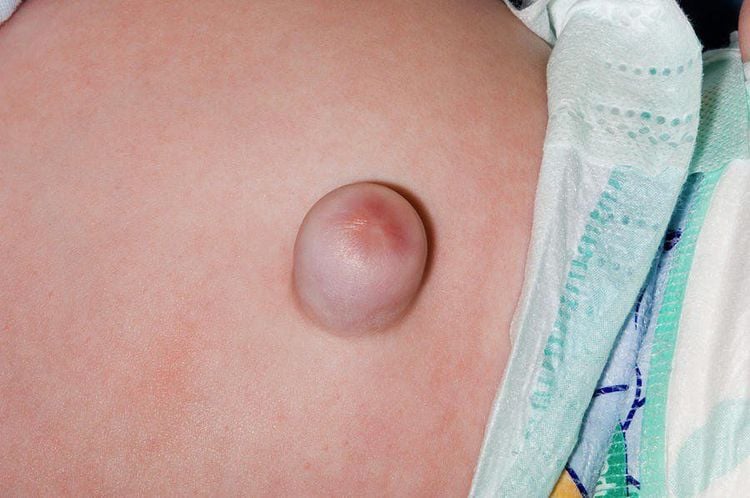
3. Complications of umbilical hernias
Complications of umbilical hernias in children are rare. Complications can occur when the protruding intestine becomes trapped in the hernia opening and cannot be pushed back into the abdominal cavity. When trapped, the blood supply to the trapped intestine is reduced and can lead to belly button pain and tissue damage. If the intestine becomes trapped and is completely cut off from its blood supply (strangulated hernia), it will gradually die. This eventually leads to infection and can spread throughout the abdominal cavity, threatening the child's life.
4. Treatment
Most umbilical hernias in infants will close on their own by the time the child is 1 to 2 years old. The doctor may even push the bulge back into the abdomen during the examination of the child, but parents should not do this. Although some people believe that umbilical hernias can be fixed by placing coins over the hernia or covering it with tape, experts advise that this method has no benefit and can cause bacteria to accumulate under the tape, causing an umbilical infection.
For children with umbilical hernias, surgery is usually indicated in the following cases:
- The child has pain in the hernia
- The hernia is larger than 1 to 2 centimeters in diameter
- The hernia is large and does not decrease in size in the first two years of life
- The hernia does not disappear by age 4
- The intestines are trapped in the hernia
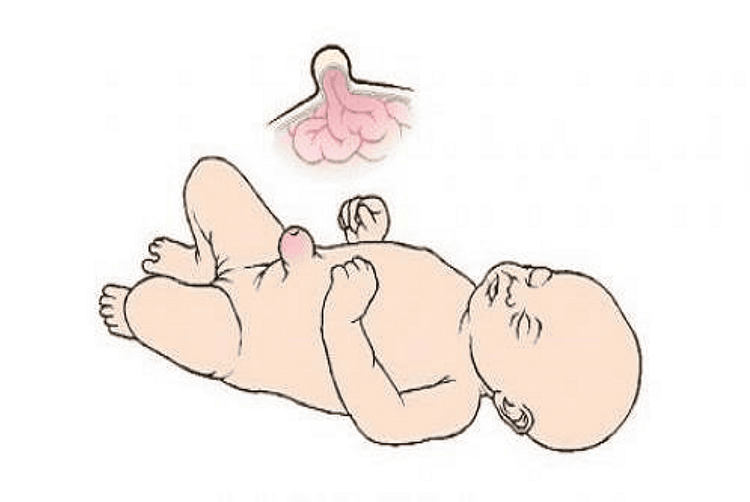
Before surgery, the child will have to fast and drink according to the surgeon's instructions. The surgery takes about an hour. After the child is given general anesthesia, the doctor will make an incision near the navel and push the intestinal tissue back into the abdomen. The doctor will stitch the hernia hole closed and seal the incision with surgical glue to hold the edges of the wound together and heal quickly.
After the child is fully awake after surgery, most children can go home within a few hours.
After surgery , your child may be given an over-the-counter pain medication to help him or her feel less pain after surgery. Your doctor will schedule a follow-up appointment about 2 to 4 weeks after surgery. While at home, if your child experiences the following symptoms, you should take him or her back to the medical facility:
- Your child has a fever
- The surgical site is red, swollen, or painful
- Your child has an umbilical cord protruding or near the navel
- Blood or foul-smelling fluid from the surgical site
- Your child has nausea, vomiting, diarrhea, or constipation that does not improve
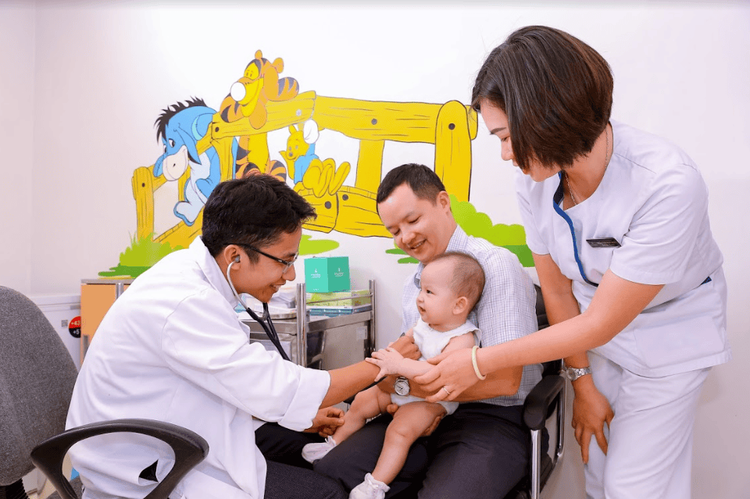
The Pediatrics Department at Vinmec International General Hospital system is the place to receive and evaluate the diseases that infants and young children are susceptible to: Viral fever, bacterial fever, otitis media, bronchitis, pneumonia in children, .... Modern equipment, sterile space minimize the impact as well as the risk of spreading the disease. Along with that is the dedication of experienced doctors with pediatric patients, making examination no longer a concern for parents.
Specialist I. MD. Dang Thi Ngoc Chuong used to work at Children's Hospital I, Thu Duc Hospital and University of Medicine and Pharmacy Hospital, Ho Chi Minh City. With strengths in diagnosing, examining neonatal diseases - neonatal resuscitation, Doctor Chuong is currently a Pediatrician at Vinmec Central Park International General Hospital and a member of the Ho Chi Minh City Pediatric Association.
Reference : webmd.com
Please dial HOTLINE for more information or register for an appointment HERE. Download MyVinmec app to make appointments faster and to manage your bookings easily.
To arrange an appointment, please call HOTLINE or make your reservation directly HERE. You may also download the MyVinmec app to schedule appointments faster and manage your reservations more conveniently.



